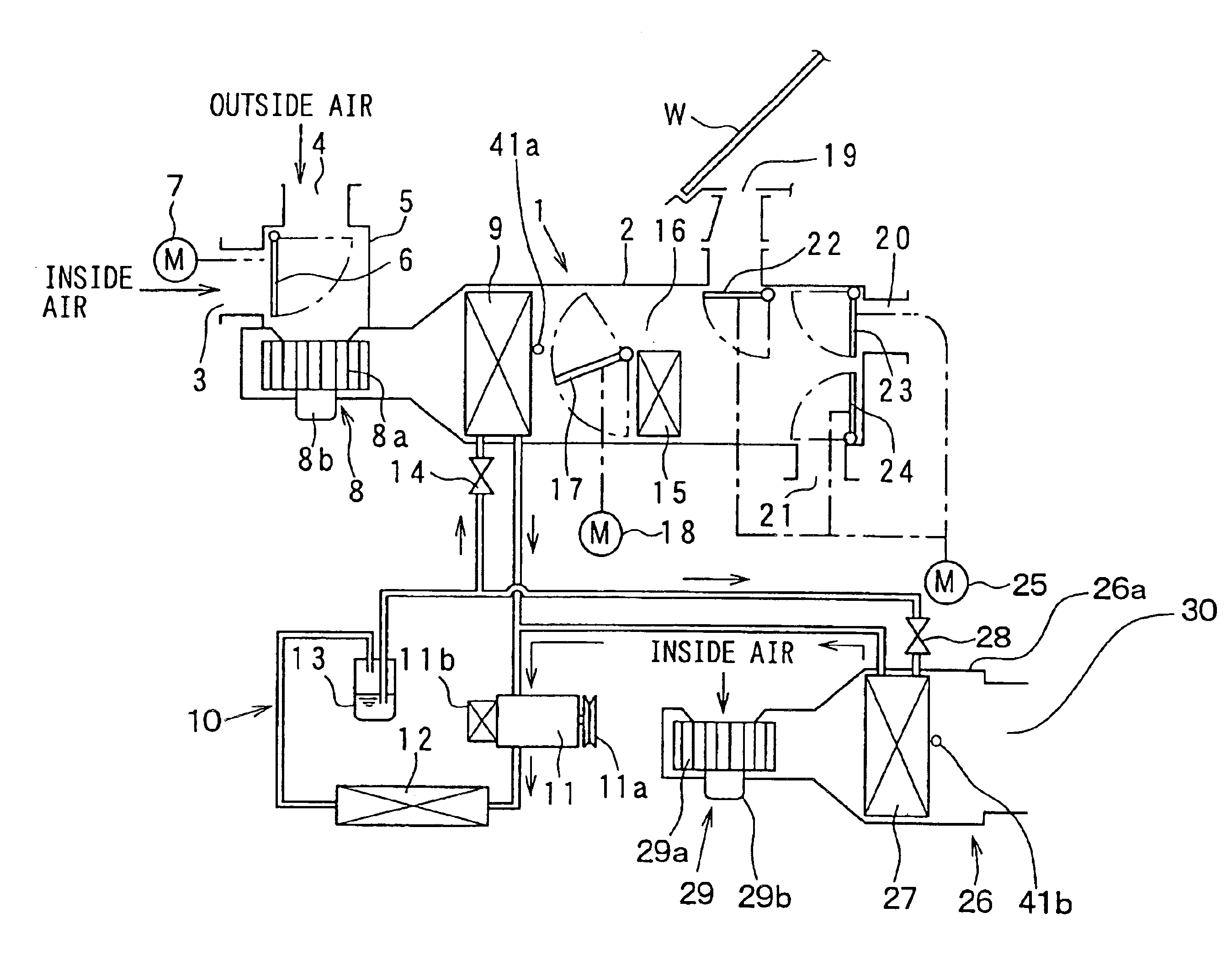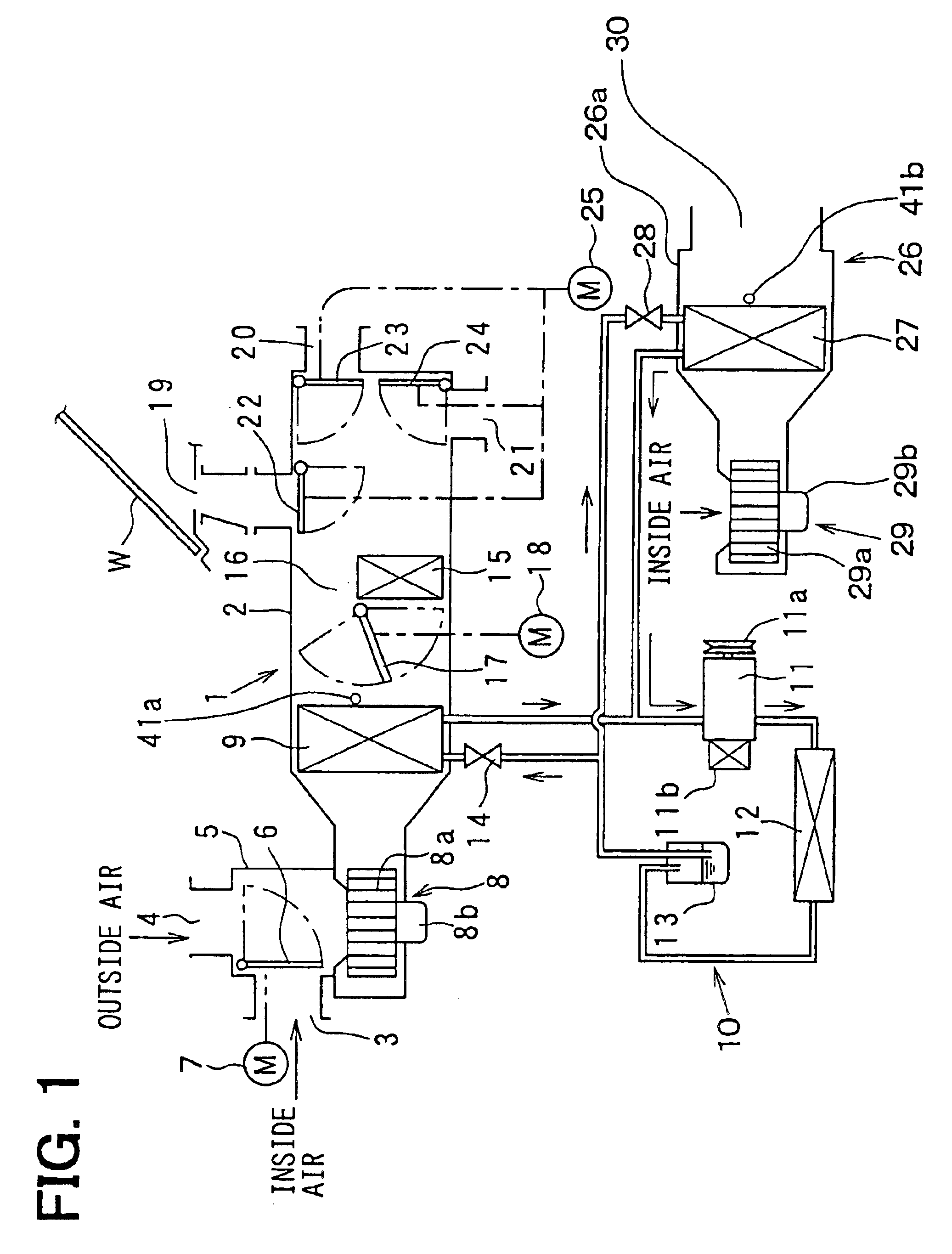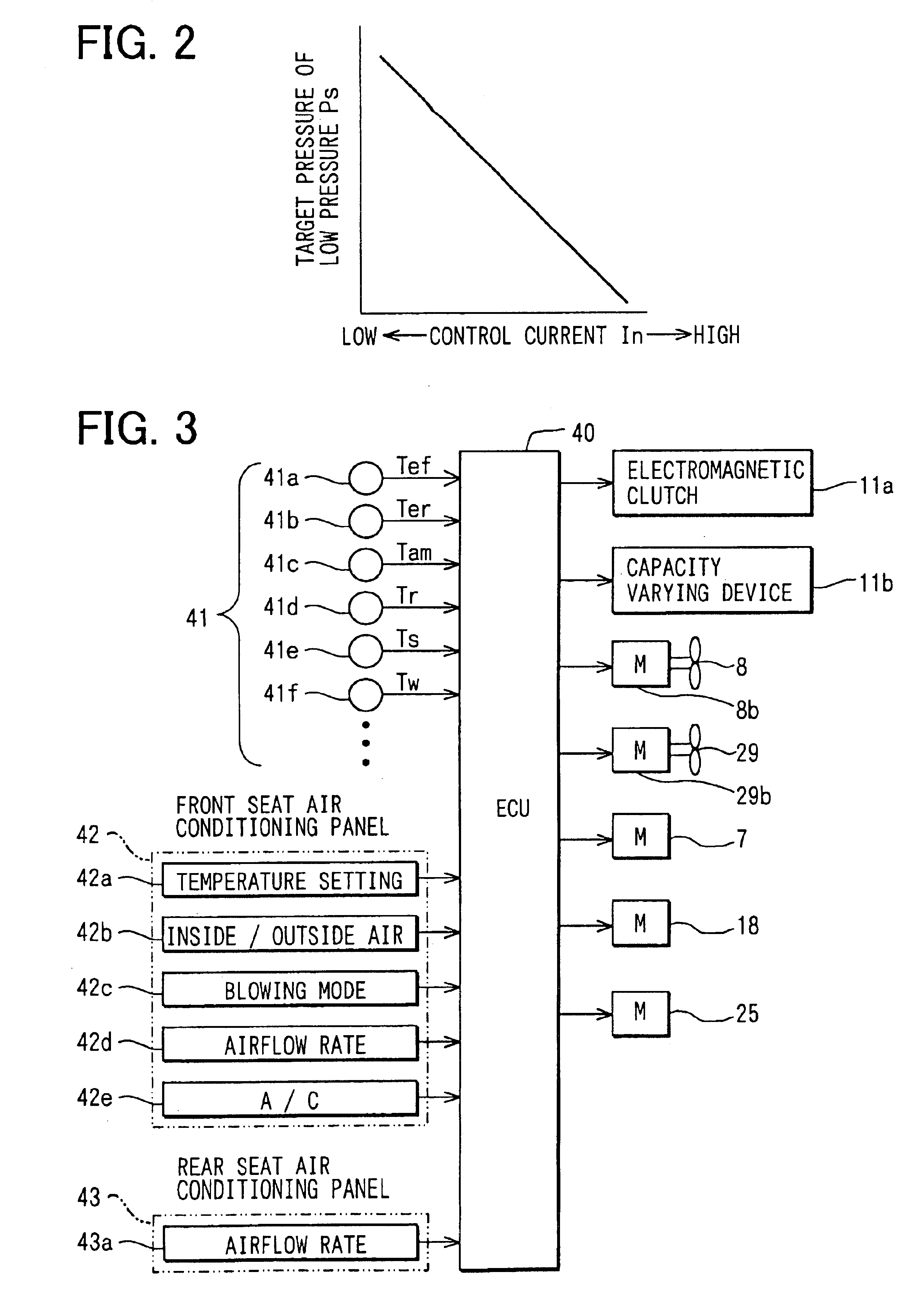Vehicle air-conditioning system
- Summary
- Abstract
- Description
- Claims
- Application Information
AI Technical Summary
Benefits of technology
Problems solved by technology
Method used
Image
Examples
first embodiment
[0033][First Embodiment]
[0034]FIG. 1 is a schematic view illustrating the overall configuration of a vehicle air-conditioning system according to a first embodiment. The air-conditioning system comprises a front seat air-conditioning unit 1 and a rear seat air-conditioning unit 26, which serve as units for air-conditioning a passenger compartment. The front seat air-conditioning unit 1 is disposed behind an instrument panel (not shown) at the front most part of the passenger compartment to air-condition the front seat area in the passenger compartment.
[0035]The front seat air-conditioning unit 1 has a casing 2, in which an air passageway through which air is blown toward the front seat side in the passenger compartment is defined. At the upstream most part of the air passageway in the casing 2, there is disposed an inside / outside air switching box 5 having an inside air inlet port 3 and an outside air inlet port 4. In the inside / outside air switching box 5, an inside / outside air swi...
second embodiment
[0095][Second Embodiment]
[0096]FIG. 6 is a flowchart according to a second embodiment, being different from the flowchart of FIG. 4 according to the first embodiment in that step S180 is added between the steps S120 and S130.
[0097]In step S180, the process determines whether it is within the range of a low cooling heat load operation (i.e., the range of power saving control operation). Here, the cooling heat load depends on the conditions (temperature and humidity) of the air drawn into the evaporators 9, 27, and the conditions of the air drawn are strongly affected by the outside air temperature Tam. Accordingly, for example, the case of the outside air temperature Tam being equal to, or lower than, a predetermined temperature can be determined as within the range of a low cooling heat load operation.
[0098]Within the range of a high cooling heat load operation, the process proceeds from step S180 directly to step S170 in order to provide the regular compressor capacity control and ...
third embodiment
[0102][Third Embodiment]
[0103]The first and second embodiments employ a compressor of the low-pressure control type, as the external variable capacity compressor 11, which uses the control current In of the capacity varying device 11b to set a target pressure of the low pressure Ps as shown in FIG. 2 and increases or decreases the discharge capacity so that the low pressure Ps is maintained at the target pressure. However, the third embodiment employs a compressor of the discharge flow rate control type, as the external variable capacity compressor 11, which uses the control current In of the capacity varying device 11b to set a target flow rate Gro of the compressor discharge flow rate as shown in FIG. 7 and increases or decreases the discharge capacity so that the compressor discharge flow rate is maintained at the target flow rate Gro.
[0104]More specifically, the external variable capacity compressor 11 of the discharge flow rate control type according to the third embodiment is ...
PUM
 Login to View More
Login to View More Abstract
Description
Claims
Application Information
 Login to View More
Login to View More - R&D
- Intellectual Property
- Life Sciences
- Materials
- Tech Scout
- Unparalleled Data Quality
- Higher Quality Content
- 60% Fewer Hallucinations
Browse by: Latest US Patents, China's latest patents, Technical Efficacy Thesaurus, Application Domain, Technology Topic, Popular Technical Reports.
© 2025 PatSnap. All rights reserved.Legal|Privacy policy|Modern Slavery Act Transparency Statement|Sitemap|About US| Contact US: help@patsnap.com



